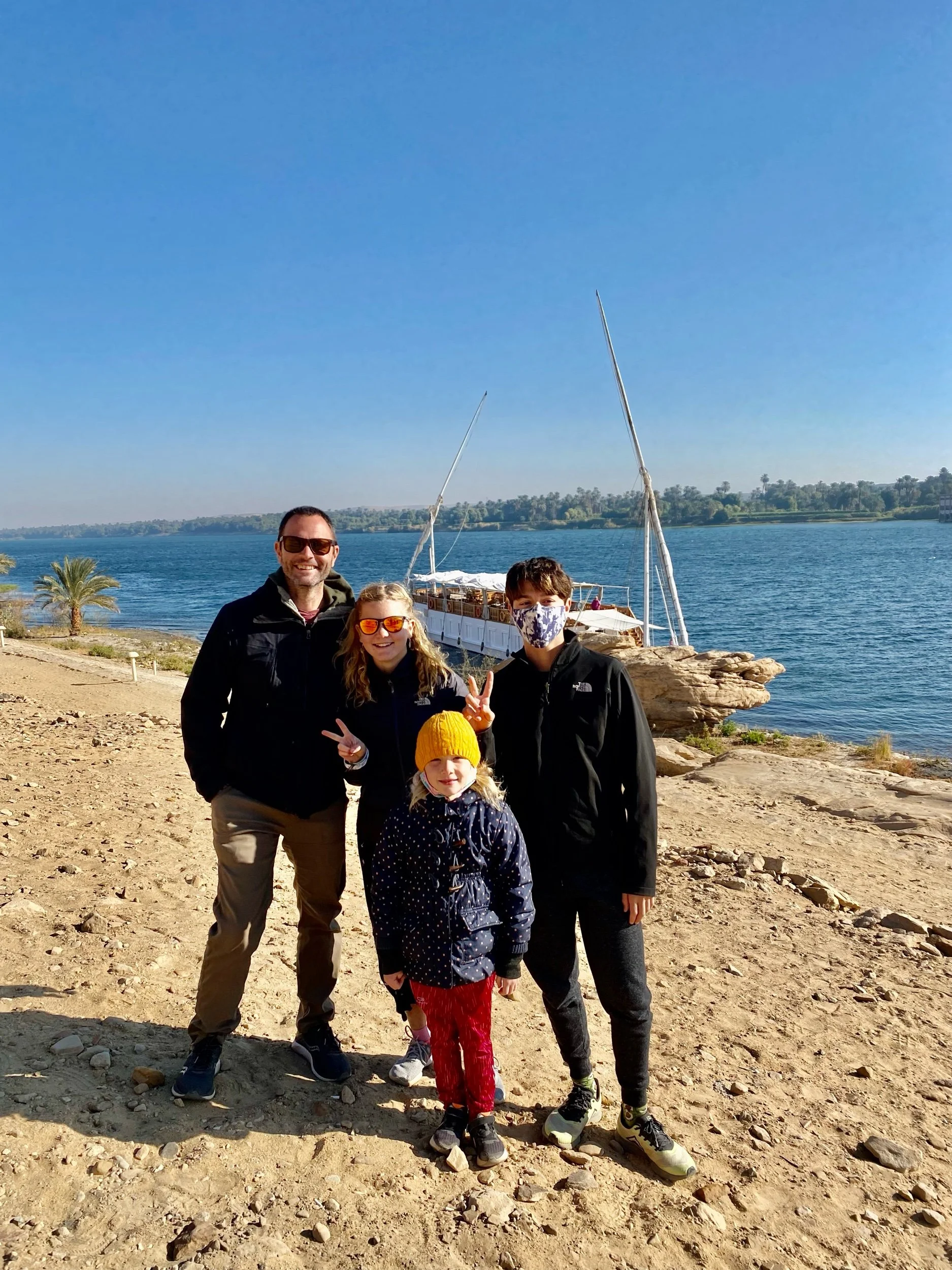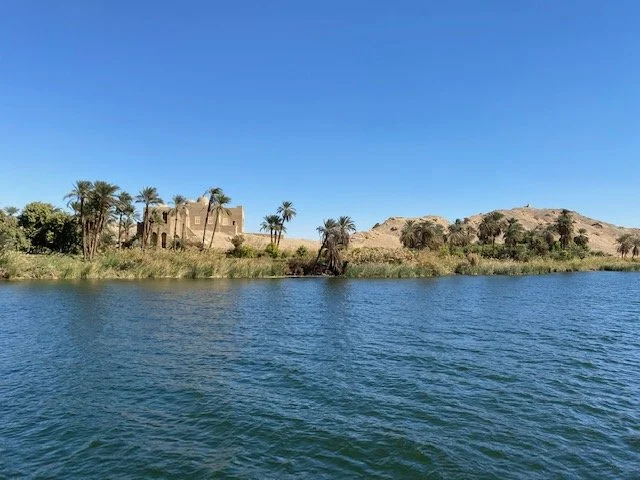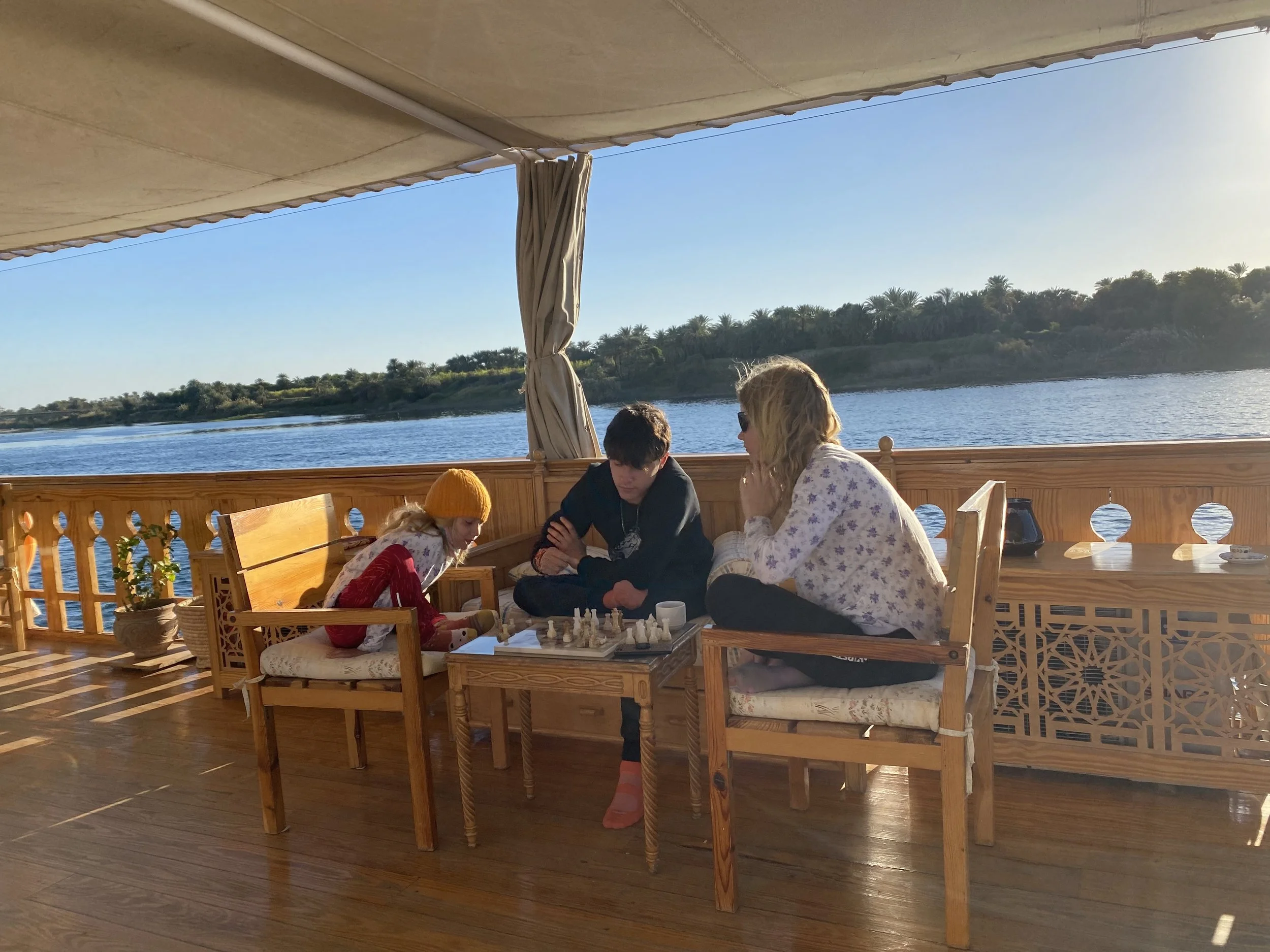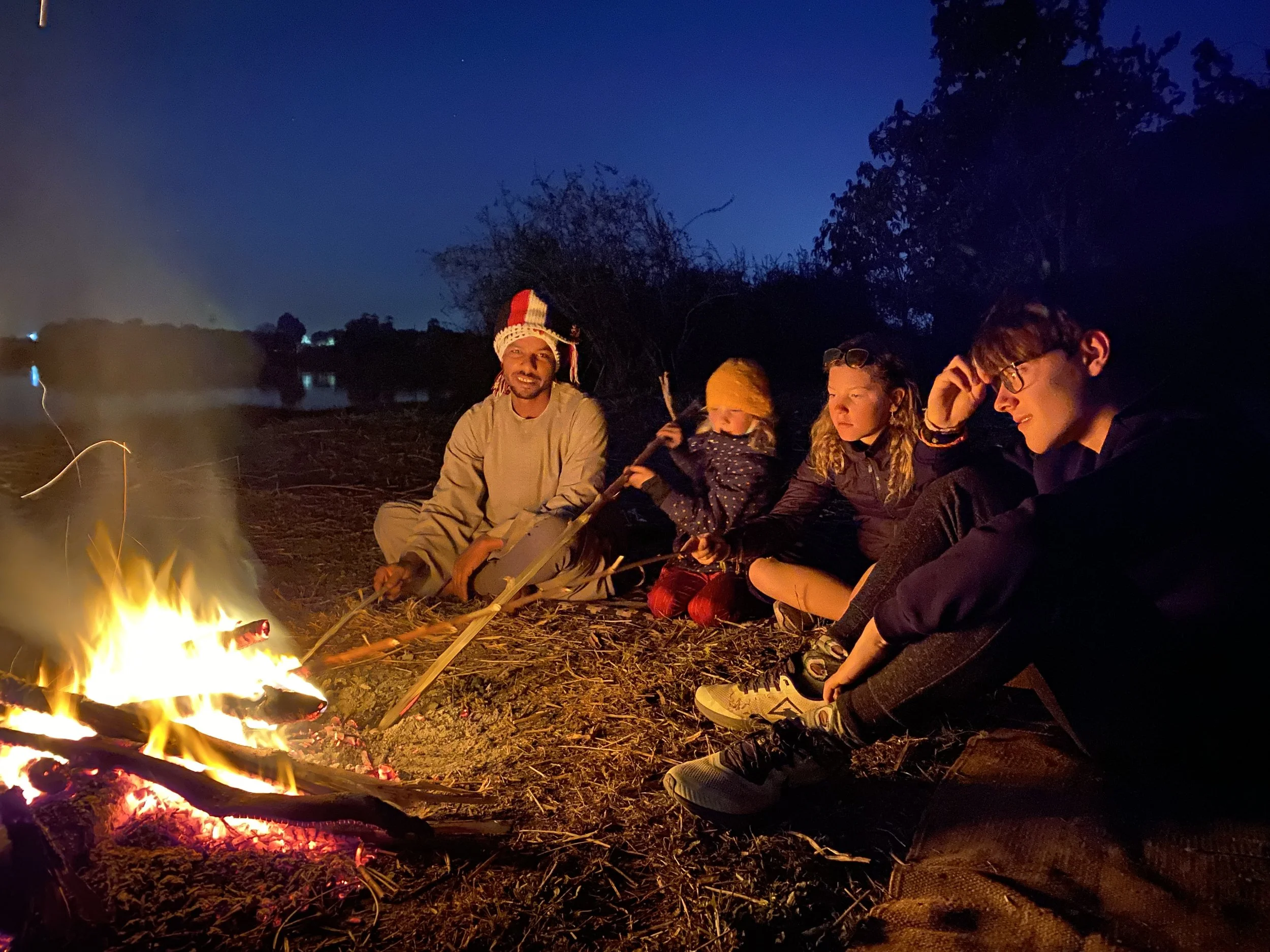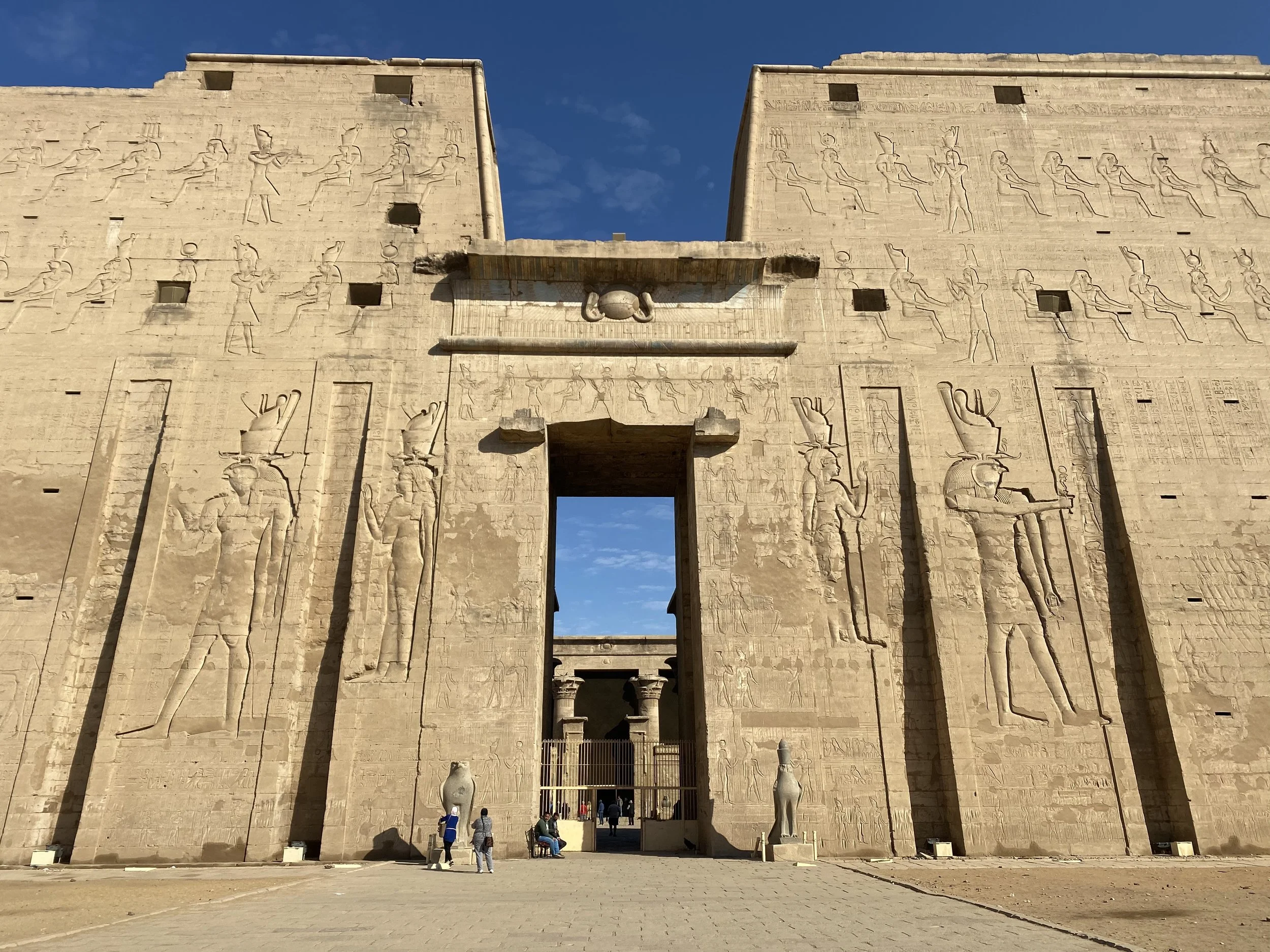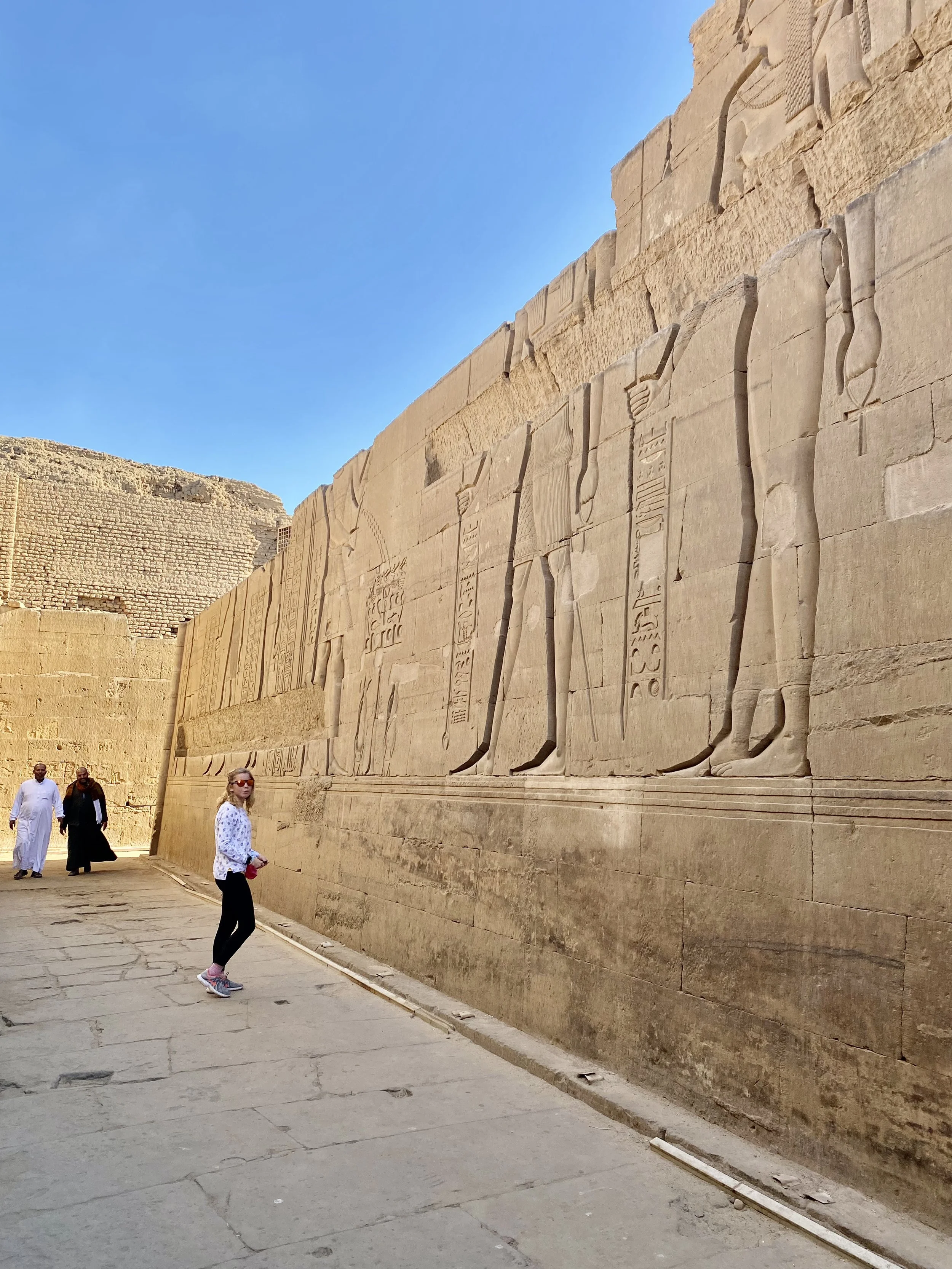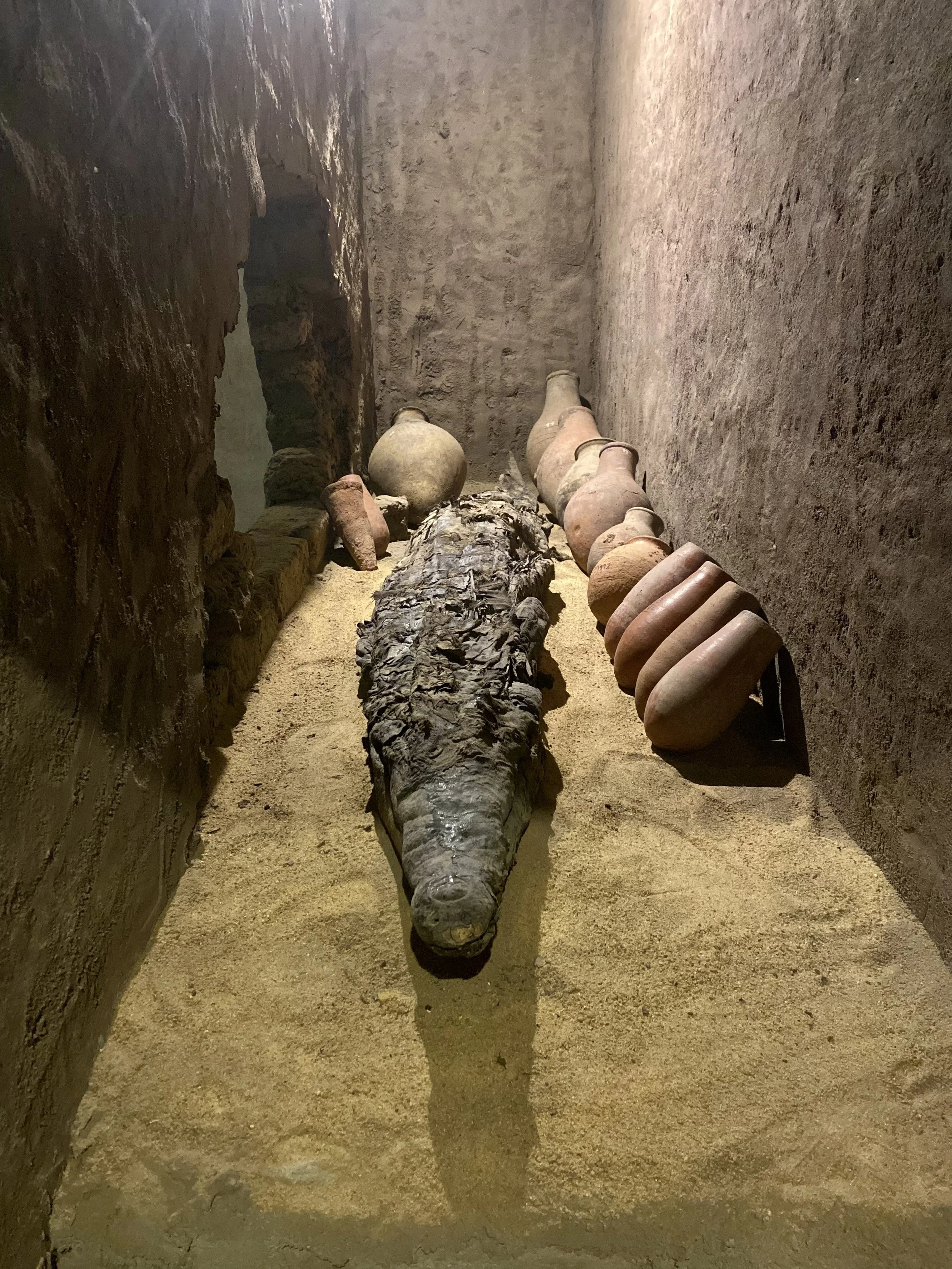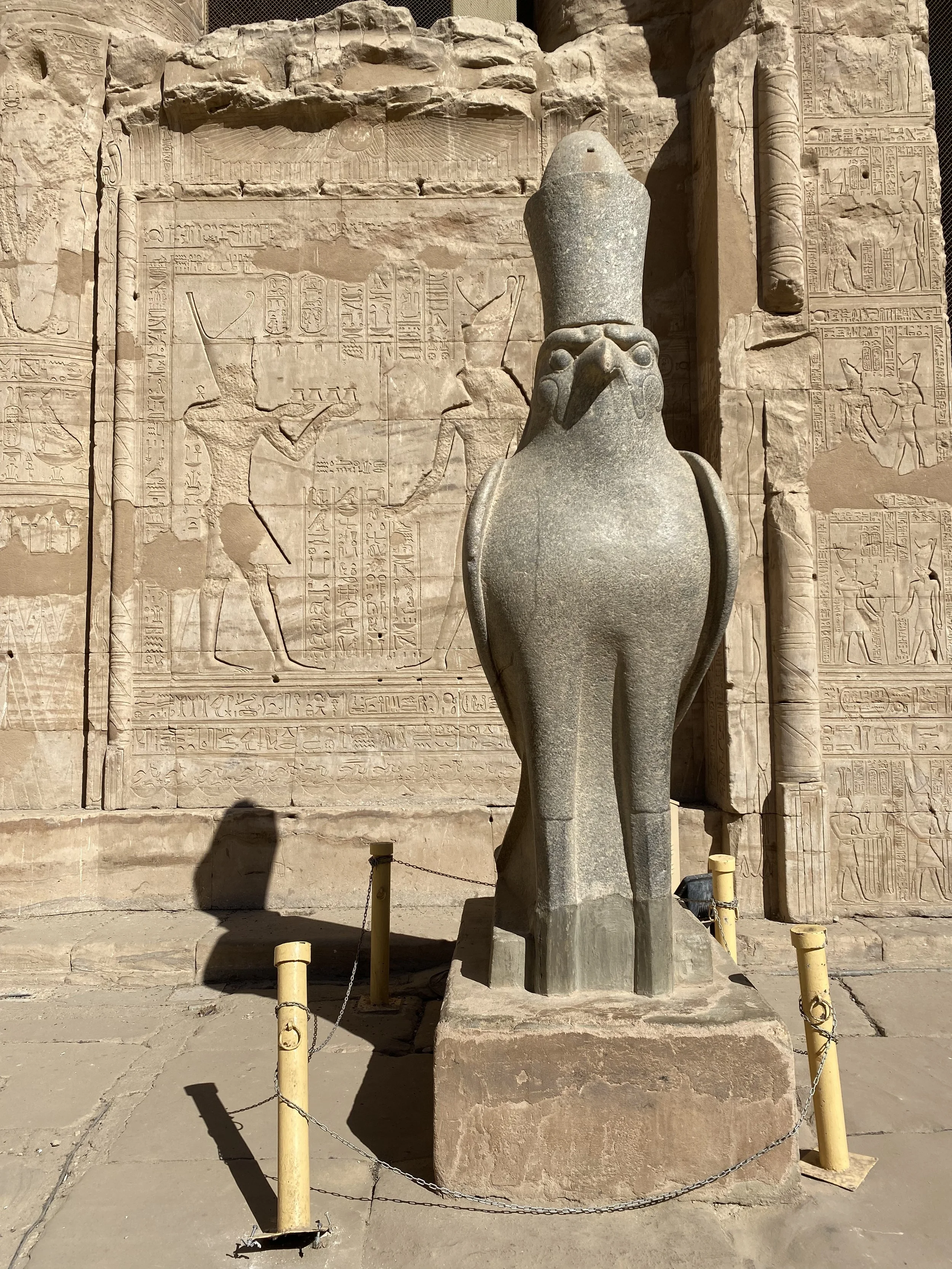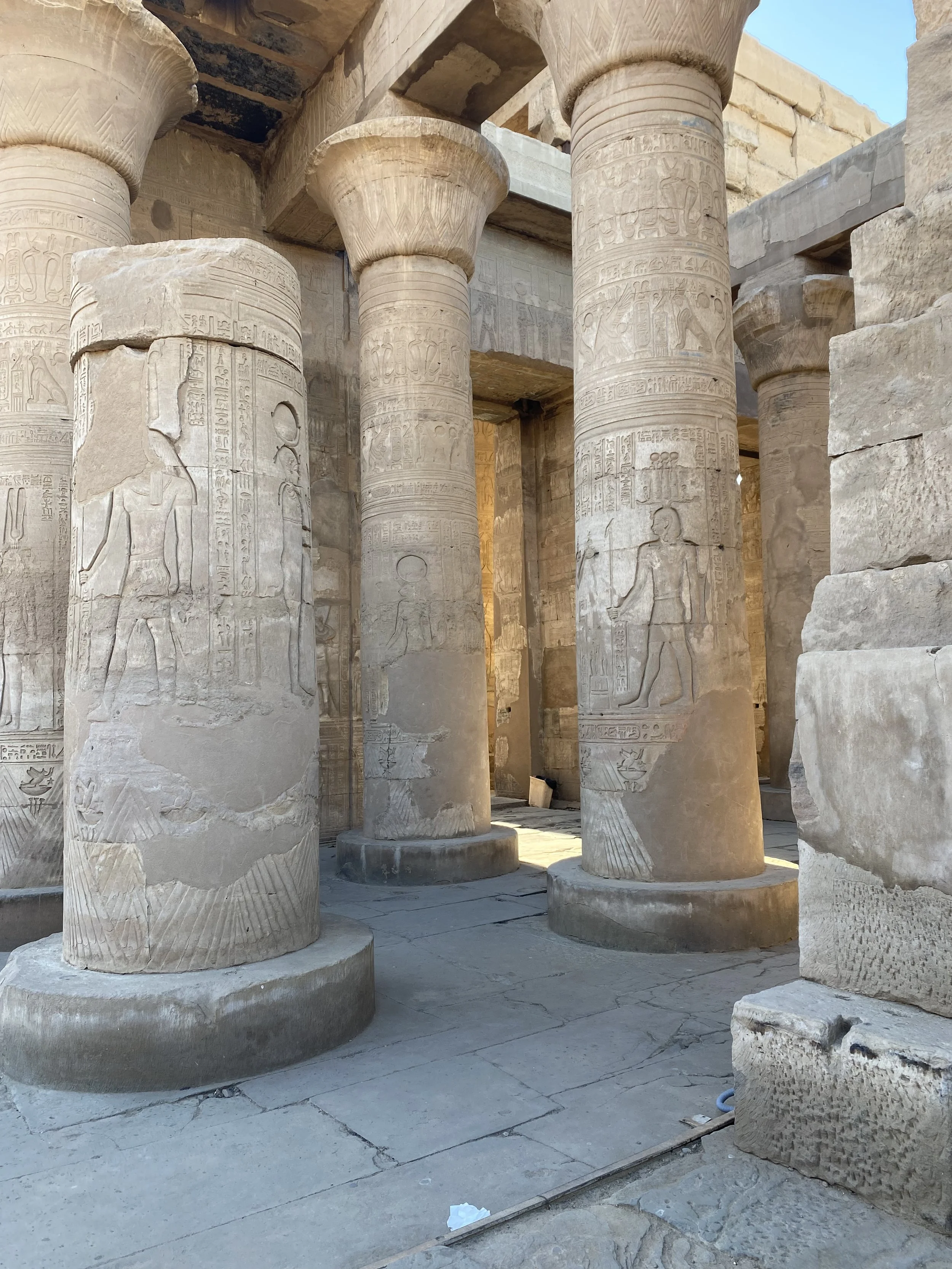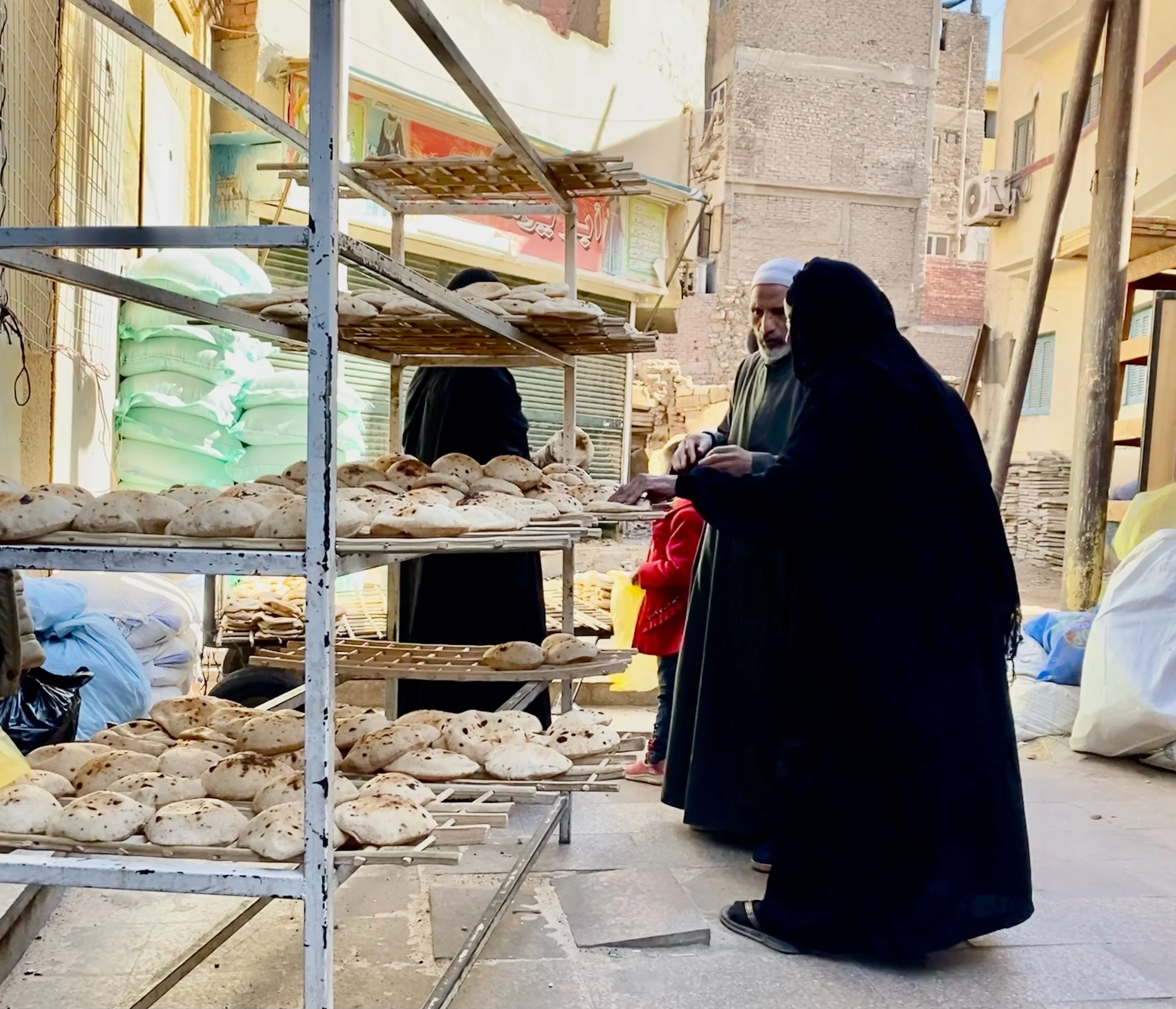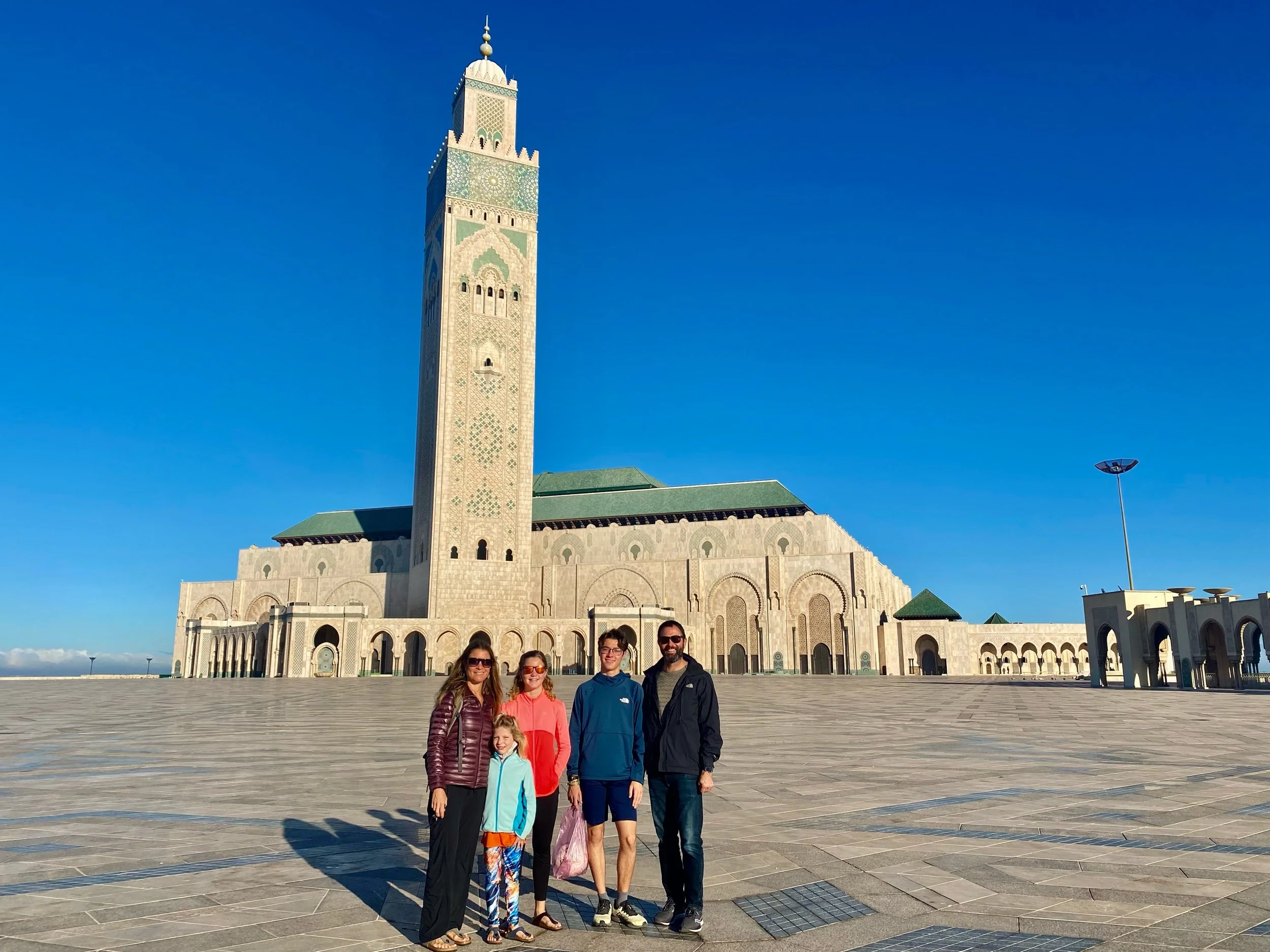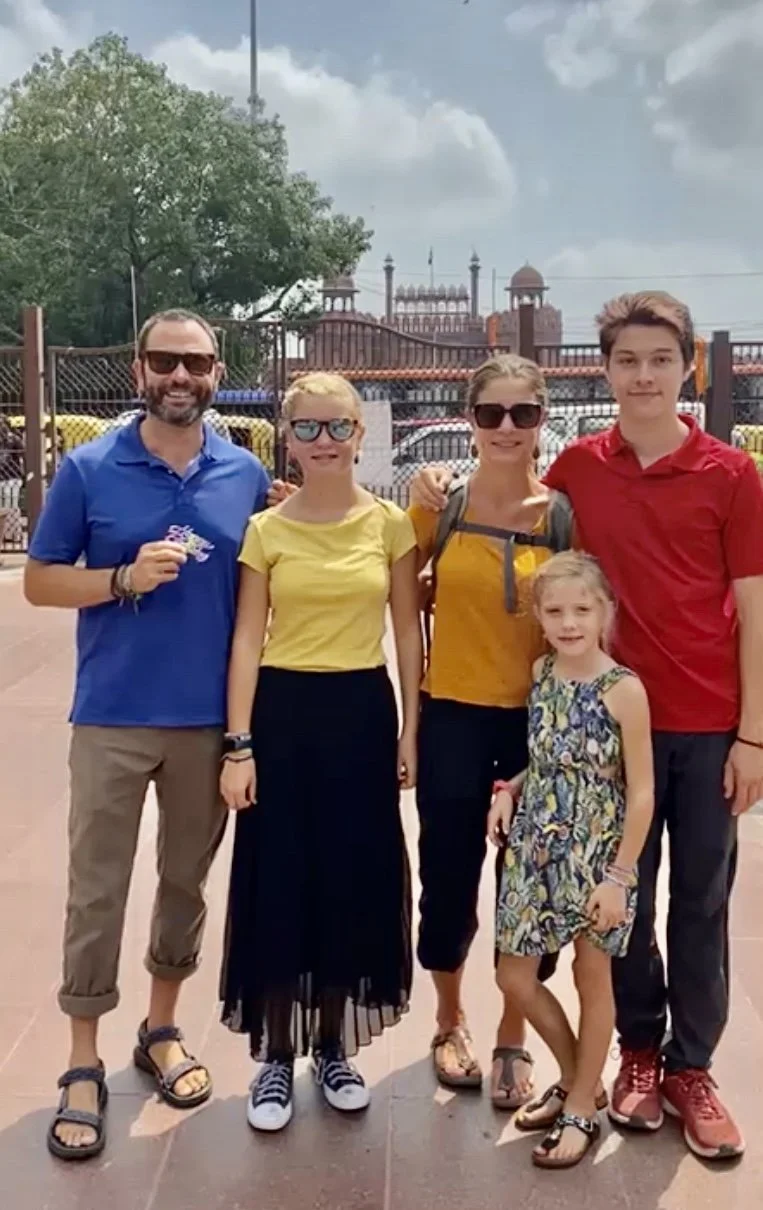Cruising on the Nile, Egypt 🇪🇬
Picture it; cruising down the Nile in Egypt, greenery around you and then a sharp contrast of sand and desert nearby. You sail by ancient remains without a care in the world. This is the ultimate luxury of Egypt.
There are many types of Nile cruises to choose from. You have the big cruise ships by famous companies like Mövenpick and Steinberg and smaller options from local companies. You can cruise the Nile down or up stream. You can take a week long cruise or just a couple of days….. We opted for a typical Dahabiya boat cruise going down the rive Nile. This is a 4 day/3 night cruise. Dahabiya boats are non motorized (they use sail or tug boat to move). Our boat, the Dahabiya Zekrayaat by Djed Egypt Travel was amazing, and the crew was awesome. They were friendly, generous, fun and were always sure to welcome us back on board. There was an Egyptologist/guide, that showed us around each site we visited. Our guide was named Mohamed Ali (or Mo as he told us to call him as there are so many other Mohameds). His English was excellent and, he really interacted with everyone.
Enjoying a game of chess (of many other games and books available onboard)
Camp fire by the Nile with one of the crew members!
The cruise is essentially all-inclusive, with the exception of adult beverages. Onboard, there is a chef, who prepares traditional Egyptian meals. Some of our favorites are Fuul (fava beans); Kefta (meat on a skewer); traditional salad with tomato, dill, and cucumber; shakshuka (a tomato-egg dish); okra stew; and fire-grilled chicken. They were amazing and very filling.
Entrance to Edfu’s temple of Horus
There are many sites along the cruise, but these are the places we stopped at:
Dual temple of Sobek and Horus (Kom Ombo) & Crocodile Mummy museum. Kom Ombo is interesting in the way that they worshiped two gods here, Horus, the falcon god, and Sobek, a crocodile god, which is very unusual. The temple is remarkable because of how well preserved it is. Ii became covered in much, hundreds of years ago, and when rediscovered, the hieroglyphs and carving on the wall had exquisite detail. Next to the Temple is the crocodile mummy museum. Inside, they have dozens of Crocidile Mummies perfectly preserved. They were all found nearby Kom Ombo, or at other Sobek worshiping temples. Some of the largest were several meters long (6 to 9 feet). They also have mummified baby crocodiles, eggs, and statues.
My sister at Kom Ombo
3000 year old crocodile mummy
Granite statute of Horus at his temple.
Temple of Horus (the son) at Edfu. The Temple of Horus is the second largest temple in Egypt, behind the temple of Karnak at Luxor. It worships Horus, a falcon god who is considered the “son”, while the one at Kom Ombo is the “elder”. It is 26 m tall, 137 m long, and 79 m wide. The temple dated to the 3rd century BC and is amazingly well preserved. This is one of our favorite temples of all, as it was so stunningly put together and carved. It really is quite incredible and massive. Everything is covered in carving, the largest blank spots are less than a meter. Another important part of the temple is the nilometer, a well used by the ancient Egyptians to measure the height of the Nile, and therefore tax the pheasants, depending on how high the Nile River was they could assume how well the harvest was going to be. The Nilometer is connected to the Nile through tunnels underneath the ground.
Wall carvings inside the temple of horus.
El Kab - tombs of the governors. The tombs of the nobles were made for the mayors of the nearby city of El kab. The tombs are amazingly painted and are among some of the best paintings we had seen up till that point. Important things about the tomb include the earliest mention of the chariot and horse in Egypt and the only known source of the expulsion of the Hyksos out of Egypt.
Quarries of Gebel El Silsila. For all the massive building projects the Ancient Egyptians made, the stone had to come from somewhere, perefably, a place where they have access to the nile, and the stone is in good condition. That is why they chose the Quarry of Gebel El Silsila. Here, we find massive cuts into the rock, where they removed tons (literally tons) of stone. Along they way, they have interesting “chapels” and dedications to gods and Pharohs. Also, there are many carvings in the walls made by the ancient workmen to pass time. This includes giraffs, dogs, crocodiles, and more exotic animals.
The dual temple of Sobek and Horus
I totally recommend this cruise, and it is a good way to really discover the Nile, and still stop and see incredible history. It also is a great break from busyness, just drifting along, while the world goes by.
The quarries at Gebel el Silsila. Me for reference.
Drawings at El Kab showing daily life. You can also see graffiti from the 1800s! (The name John along with 1804 has been seen all over egypt).

























